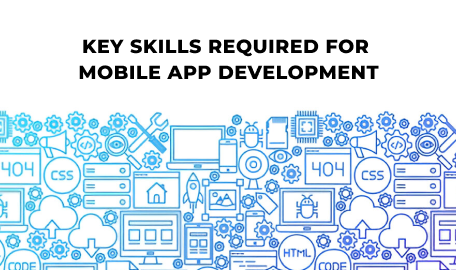Insights
Discover the latest trends, insights, and best practices in web and mobile app development

Enterprise Web Development: Building Scalable, Secure, and Future-Ready Solutions
Web applications are currently used in modern businesses to automate the workflow, improve the customer experience, and reach digital scalability. However, it may be difficult to select an appropriate development partner. The right web application development firm makes sure that your product is fast, secure, scalable and is future-innovative.

Why Progressive Web Apps (PWAs) Are the Future of Web Development
Web applications are currently used in modern businesses to automate the workflow, improve the customer experience, and reach digital scalability. However, it may be difficult to select an appropriate development partner. The right web application development firm makes sure that your product is fast, secure, scalable and is future-innovative.

Digital Transformation Across Industries: How Technology Is Powering Business Growth
Web applications are currently used in modern businesses to automate the workflow, improve the customer experience, and reach digital scalability. However, it may be difficult to select an appropriate development partner. The right web application development firm makes sure that your product is fast, secure, scalable and is future-innovative.

How to Choose the Right Web Application Development Company for Your Business
Web applications are currently used in modern businesses to automate the workflow, improve the customer experience, and reach digital scalability. However, it may be difficult to select an appropriate development partner. The right web application development firm makes sure that your product is fast, secure, scalable and is future-innovative.

How to Develop an iOS Application on Windows? (Complete 2026 Guide)
Mobile apps have become an integral part of every modern business strategy. Apps increase interaction, purchases, and brand awareness whether it is an online shopping site, fintech startup, or a healthcare platform. iOS is one of the mobile platforms that have been at the forefront in providing smooth user experiences, high security and customer loyalty.It is one of the most lucrative ventures for developers and agencies who want to build a solid portfolio and earn recurring revenue.

What is Shopify App Development? A Complete Guide for 2025
Shopify has millions of active merchants who subscribe to the apps within the Shopify App Store every day to enhance their online store. As long as you have the right skillset, you can make a career out of Shopify app development.
It is one of the most lucrative ventures for developers and agencies who want to build a solid portfolio and earn recurring revenue.

Which Programming Language is Best for Mobile Game Development?
The mobile gaming industry is thriving and will probably continue this upward trend. At the same time, mobile games are expected to make over $126 billion in revenue globally, as more and more people get smartphone users, internet speeds become faster, and casual and competitive games become more popular. A lot of new games get downloaded daily on both iOS and Android, and the need for ingenious, high-performing games has never been greater.

What Skills Are Essential for Mobile App Development?
The mobile app industry is booming. There are millions of apps in app stores today, but only a few succeed. As of early September 2025, the Google Play Store hosts approximately 2,066,223 apps, while the Apple App Store lists around 1,990,284 apps.

What Factors Affect Hybrid App Development Costs in India?
As consumers are using mobile apps, more companies are investing in building their own mobile apps. Since hybrid apps offer both the convenience of native apps and the features of web apps, more businesses are planning to hire a hybrid app development company in India to enjoy affordable development and maintenance costs.